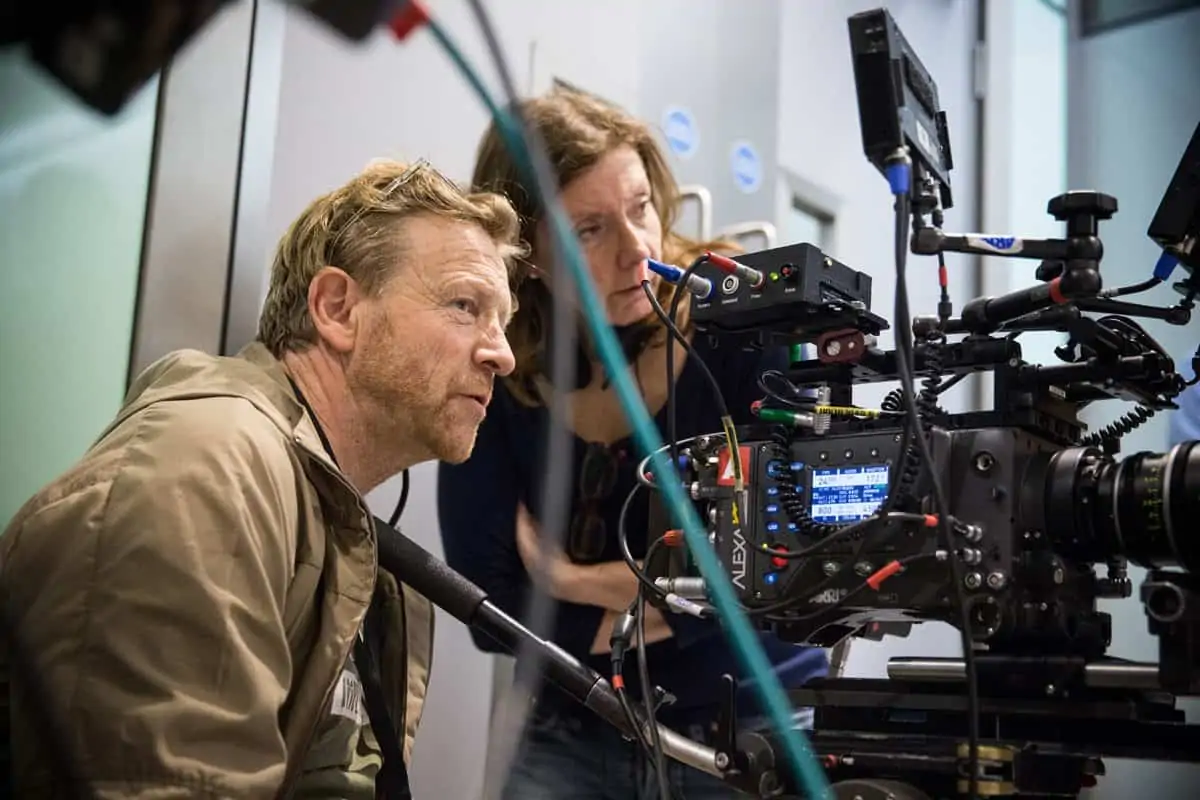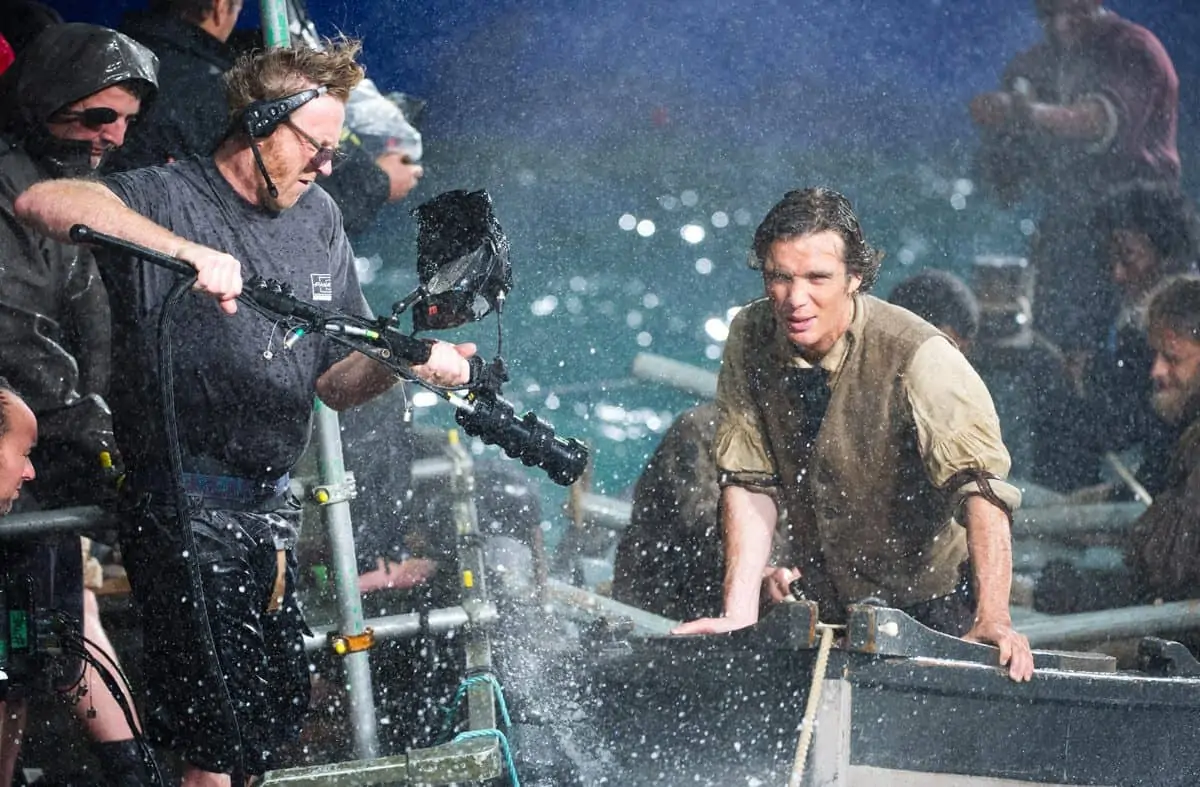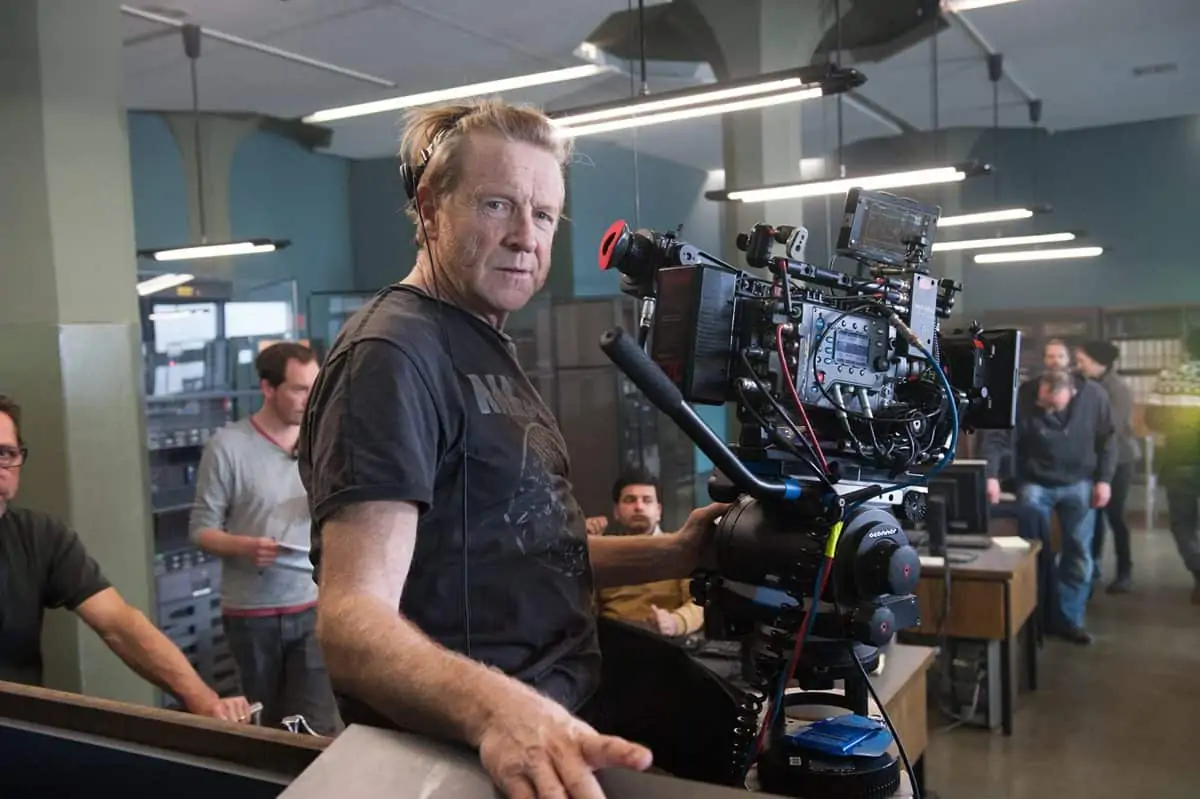War child
Anthony Dod Mantle DFF BSC ASC / First They Killed My Father
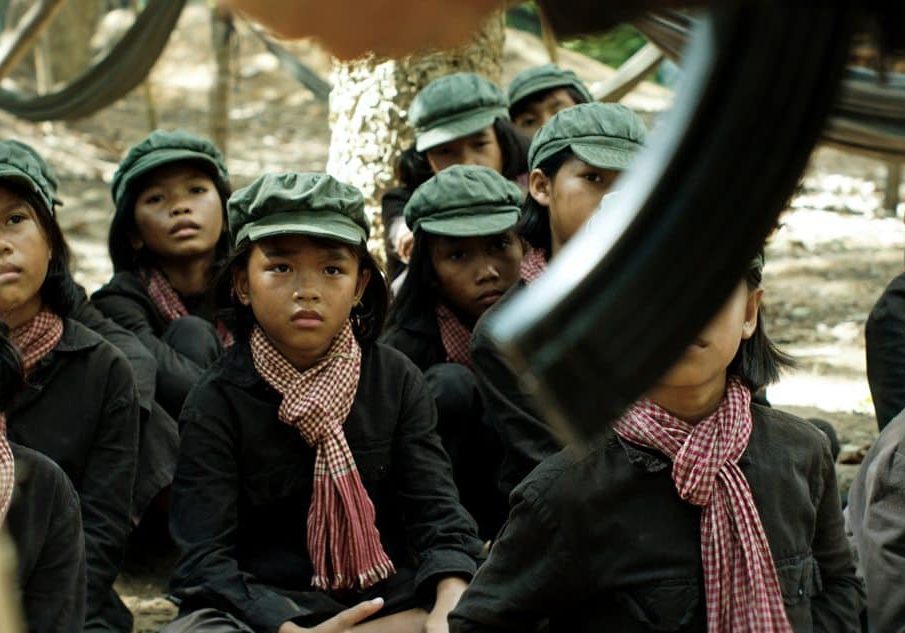
War child
Anthony Dod Mantle DFF BSC ASC / First They Killed My Father
BY: Ron Prince
First They Killed My Father depicts the true story of Loung Ung, who was forcibly trained as a child soldier, whilst her parents ‘disappeared’ and her siblings were sent to labour camps, during the rule of the Socialist Khmer Rouge regime in Cambodia. Her story is part of an infamous historic episode, which saw the depopulation of the country's cities, and the deaths of at least 1.5million people, around 25% of Cambodia's citizens.
Loung, played by Sareum Srey Moch, was only five-years-old when the Khmer Rouge captured the Cambodian capital, Phnom Penh, and seven when she made it to sanctuary in a Red Cross camp. During the two years of her subordination, she was exposed to the horrors of famine and murderous brutality, and drilled with skills that no youngster should ever experience – such as how to shoot an AK-47 machine gun, plant rows of land mines, and plunge spiked wooden spears into the Vietnamese enemy.
With the exception of a number of stunning aerial shots, almost every image in the movie is concentrated around Loung’s point-of-view. Some of the action takes place in the first person, with the camera representing what Loung sees. At other times it takes more of the role of an observer, with the young heroine in-frame as other background action moves the story along.
The movie opens with newsreel clips revealing how US carpet-bombing of Cambodia during the closing months of the Vietnam War created a power vacuum that was rapidly filled by the autocratic, xenophobic, paranoid and repressive Khmer Rouge. Loung's narrative begins in relative peace, as her family ponders what changes the end of the war might bring. But when the Khmer Rouge occupies the city, Loung's father, a military policeman, leads his family with hoardes of others into the countryside, hoping not to be detected. Therein, the film becomes a story of daily survival.

First They Killed My Father is Angelina Jolie’s fourth narrative as a director. The Netflix film was written by Jolie and Loung Ung, based on Ung's best-selling memoir of the same name. Acclaimed Cambodian filmmaker Rithy Panh, whose family perished in the Khmer Rouge genocide, was producer and creative consultant, and Jolie's adopted Cambodian son, Maddox Jolie-Pitt, was an executive producer.
As Cambodia's foreign-language Academy Award entry, the film has garnered five-star reviews, and also earned its Oscar-winning cinematographer, Anthony Dod Mantle DFF BSC ASC (Slumdog Millionaire), the Bronze Frog at the 2017 Camerimage Festival Of Cinematography.
Working to a 4K mandate stipulated by Netflix, principal photography on the production began in early November 2015 in Siem Reap and, after a brief hiatus for Christmas, wrapped in February 2016 in Battambang, Cambodia. Shooting was also conducted in Phnom Penh.
Dod Mantle says the physical conditions were fierce – with production taking place in searing 45ºC heat and 100% humidity, and sickness-inducing bugs striking the cast and crew intermittently.
However, the first tranche of the production proved torrid in other respects. Due to unfortunate circumstances, Dod Mantle was invited to oversee the cinematography at extremely short notice, and had only three days to prepare for the shoot.
“There had been a number of tribulations and I arrived to find a chaotic situation, and a beautifully-dressed director, who I had never met before, in the middle of a paddy field,” he says. “The previous cinematographer and several key crew had suddenly left the production, and it was my job to get things going again – despite arriving in Cambodia on a Friday night and turning-over on Tuesday morning. But Angelina is a very impressive person, and I have a lot of respect and admiration for her. I stood by her side, and helped her as much as I could.”
That said, Dod mantle remarks that it was, “not very nice taking over someone else’s crew, and not easy creatively either, as every cinematographer has their own creative and artistic vision for each project they work on. For me, in the period between November to Christmas, it was a case of catch-up – reading, prepping, thinking, working gradually day-by-day – to get on top of things. Angelina and I certainly had some very honest and frank creative dialogues along the way.”

As regards the crew, Dod Mantle was able to encourage some of his regular collaborators to the production – including first AC Telfer Barnes, gaffer Thomas Neivelt, and the camera-rig-building talents of Jacob Bonfils. With production imminent, Dod Mantle retained the Sony F55 cameras and vintage Panavision lenses that had been originally chosen for the production, but supplemented the selection of glass with a set of Leica Summicrons, along with a set of Schneider lenses that would be used in conduction with a 4K Flare camera for close-up handheld work.
“When I arrived, most of the production had been planned as a Steadicam shoot, but I felt the story – though the child’s eyes – needed something more emotional and varied from the photography – to be less documentarian and more anthropological,” he says. “I love operating and decided to introduce handheld alongside Steadicam (operated by Bela Truz), in order to better-project how Loung perceived incidents going on around her – which were everything from beauty and happiness in the beginning, to unadulterated chaos and darkness at the end. For me, that was the psychology behind the way the camera had to work."
In the devastating scene when Khmer Rouge soldiers take Loung's father away, "we see what she sees," says Dod Mantle. "She peeps into the house and watches the tearful farewell scene between her parents. When her father then comes to Loung, the camera is low initially, from her POV. The father looks straight down, very close to the camera. He's almost looking at the audience. You genuinely feel it's one of the last moments in her life that she is going to see her father alive."
As the scene goes on, he also explains, "We had to break out from the subjective to the objective point-of-view, because when they are embracing, the camera has to come in from the side. It's a very close embrace against the light with lens flare. I think that flare has the connotation of memory and sadness. The last shots in the scene are a very gentle shot of her looking at him, and a gentle track back from the two of them. Then we see the father walking away, with the soldiers, but ominously it is also a different route than when he's going to work."

"It was not very nice taking over someone else’s crew, and not easy creatively either, as every cinematographer has their own creative and artistic vision for each project they work on.
For me, in the period between November to Christmas, it was a case of catch-up – reading, prepping, thinking, working gradually day-by-day – to get on top of things. Angelina and I certainly had some very honest and frank creative dialogues along the way.”"
- Anthony Dod Mantle DFF BSC ASC
With prep-time at a premium, Dod Mantle necessarily had scant opportunity to consider creative references at any length. “Ironically, I visited a Red Cross Camp on the border of Thailand and Cambodia in 1979, and remember seeing some horrific sights there. Although I was too young to engage with it and understand the genocide that had taken place, I was certainly touched by it, and think this was a great motivation to get involved with this production.
“Prior to production, I already knew of Loung’s book, and The Killing Fields (1984, dir. Roland Joffé) is one of the unforgettable films about this period, especially with Chris Menges’ seismic cinematography. I looked at historic B&W and Kodachrome colour newsreel of the Khmer Rouge, and watched some of Rithy Panh’s films – all of which are macabre – chiefly to absorb the colours and the faces of the people. I also referenced a number of stills that Maddox had taken of rural Cambodia, which Angelina had printed up. Angelina herself has a keen eye for colour, especially the changing seasons, and wanted the production to be lit as naturally as possible.”
The rest of the work really came down to experience and intuition. “I quite enjoy being thrown to the lions, and flying by the seat of my pants,” says Dod Mantle. “This comes from documentaries. You learn to accept, in a matter of seconds, that you cannot control what's happening around you, and that you simply have to do the best with what you have been given. Absorbing the anarchy – which included not being able to readily communicate with many of the crew, nor our young leading actress – gives you an energy that is quite fertile and interesting. You take this on board, bring it into a place of peace in your head, and you work spontaneously in the end.”
To both soften the look of the 4K digital sensors, and develop the picture into the desired sweet-spot, Dod Mantle variously employed graduated ND filters at top, bottom, left and right of the frame, along with traditional Vaseline. “I like images that do not over-bombard you with detail, and prefer go for holes of clarity in the picture, to get to the essence of the moment, and colour is an important part of that. Every single colour in this picture resonates certain feelings,” he says.
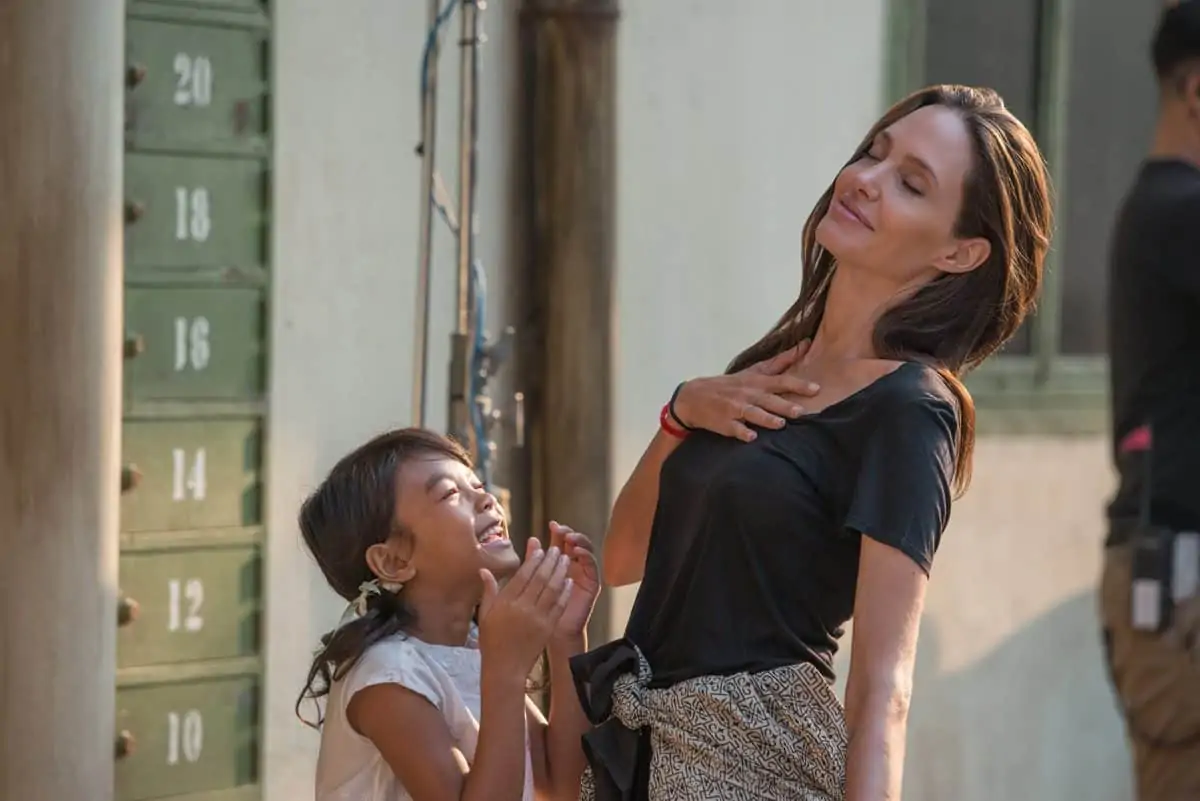
Every now and then, the story features a flashback or fantasy, often focussing on Loung’s memories of the time when the family were comfortable, healthy and carefree. At one point, the hungry and terribly sad Loung recollects the dinner table at their Phnom Penh home.
“We purposely made that recollection an oversaturated visual feast with food, colour and lushness," says Dod Mantle. "It represents Loung’s yearning for the joy of her past life." By way of contrast, flashbacks to her parents, which appear later in the film, "are dark and haunting and brief, colourless, brutal," he explains. “The earth, sky and trees seem to have been bled of colour, the loss of this pigmentation stands in for the loss of hope.”
To break free of the relentless POV style of the camera work, Dod Mantle elected to introduce aerial photography – using RED cameras on cranes and drones – to deliver the story from a geographical context, as he explains.
“I had seen some work by the photographer Rose-Lynn Fisher, and the incredible images she had taken of dried human tears using electron microscopes. They look like graphic satellite shots of the world, and evoke the eye of an indifferent God watching from above. If ever a landscape was littered with tears, it’s Cambodia. I showed them to Angelina, who liked the concept behind the idea and the break-out from the claustrophobia of the POV style. These aerials give you the wider view of the vastness of the camps, the rice fields and plantations, and the scale of the human tragedy.”

Dod Mantle competed the DI grade on First They Killed My Father with Adam Glasman using da Vinci Resolve, at Goldcrest in London, over the course of three weeks.
“I like to be busy and active in the grade, and discussed with Angelina how I wanted to further develop the colour and the looks of particular scenes – such as when Loung dreams of food – and the overall change of the colour arc – from a kind of Kodachrome look at the beginning, to gradually draining the colour down to dusty, sandy, greys and blacks, with an occasional red scarf. She agreed and let me and Adam get on with it.”
Despite the fraught start to the production, exhausting schedule and unrelenting heat, Dod Mantle says the experience of shooting First They Killed My Father, was rewarding.
“As cinematographers, we’re lucky to have the privilege of choosing the projects we want to get involved with, and it’s a privilege to be able to entertain people for an hour and a half of their lives. But, we’re not here for long, and it’s really important what you feel about yourself on an individual level. I am glad that people keep coming to me with projects that are important to them, to us all. With Snowden (2016) it was the opportunity to look at surveillance and its effects on society with Oliver Stone. With T2: Trainspotting (2017) it was the chance to investigate subculture with Danny Boyle. On First They Killed My Father it was the chance to work with Angelina on the cruel exploitation of children during conflict, and the serious loss of life that could easily happen again, especially if engineered by the rich and powerful countries.”

